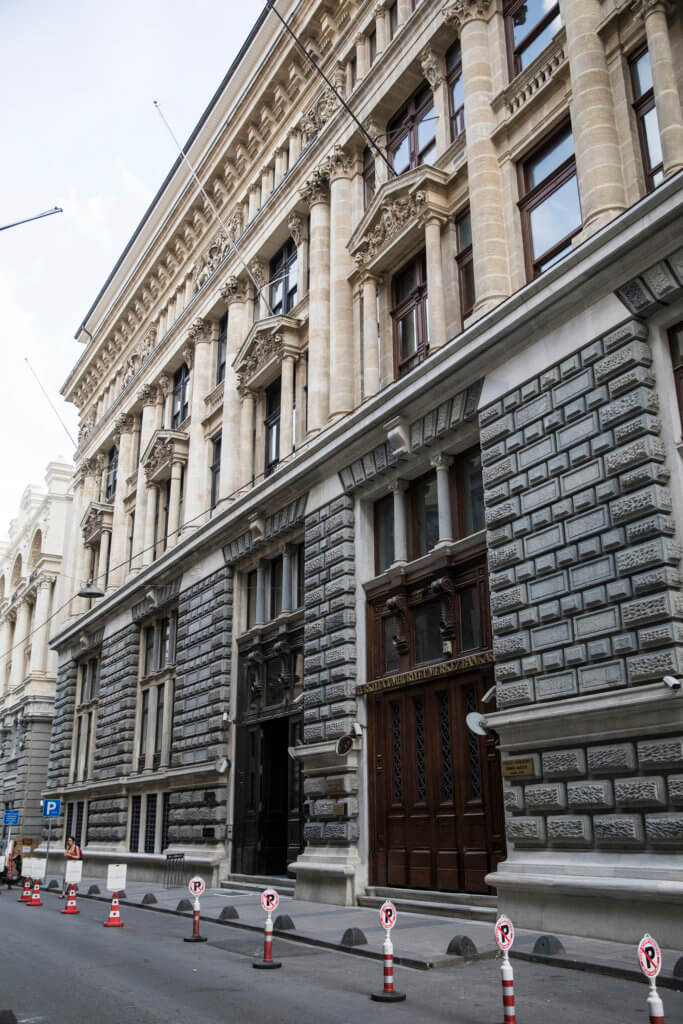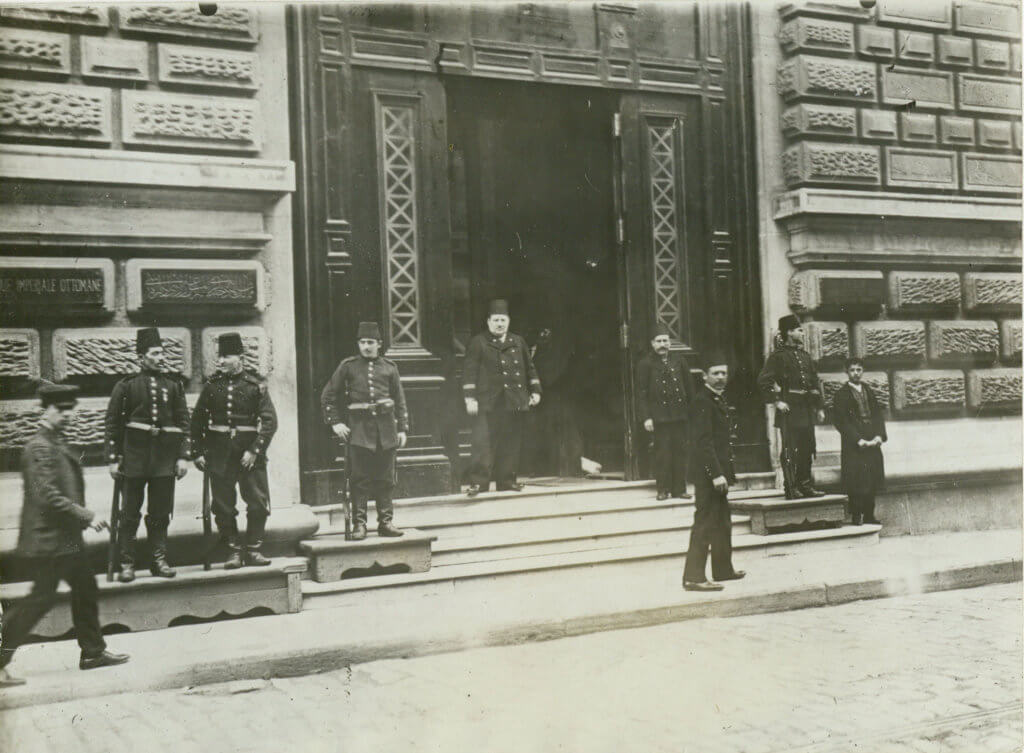SALT GALATA
The magnificent twin buildings at no: 11-13 Bankalar (Banks) Avenue house SALT Galata on one side and the Istanbul Branch of the Central Bank of the Republic of Turkey on the other. Designed by architect Alexandre Vallaury and opened in 1892, the building’s street-facing façade decorated in relief is in the neoclassical style, while its bay-windowed (“cumbalı”) façade on the Golden Horn side is structured as orientalist. The difference between the two façades is representative of the bank’s position between the East and West. The structure on the left was used as the head office building of the Ottoman Bank until 1999, while from 2000 onwards it housed the Garanti Bank branch and regional offices on its ground floor and the Ottoman Bank Archives and Research Center on its upper floors. Since 2011, it has been functioning as SALT Galata. The structure on the right, on the other hand, served the Tobacco Régie Company until 1925, the Tobacco Monopoly Administration from 1925 to 1934, and the Istanbul Branch of the Central Bank since.
When the Platform Garanti Contemporary Art Center, Osmanlı Bank Museum and Garanti Gallery operating under the umbrella of Garanti Bank were restructured into an autonomous institution by the name of SALT in 2011, the building on the left-hand side was restored and turned into SALT Galata. SALT Beyoğlu also opened its doors on İstiklal Avenue at the same time, but closed down in December 2015 due to some structural changes to reopen only in April 2018. Whereas SALT Ulus, in Ankara, opened in 2013, and as of 2018 started operating out of an office rather than the historic building in Ulus.
SALT Galata includes SALT Research with its library and archive offering public access to a multitude of print and digital sources, a 219-capacity Auditorium, the redesigned Ottoman Bank Museum, workshops suitable for high levels of participation, the Open Archive (Açık Arşiv) bringing archive materials to light, a café and restaurant, as well as a store and exhibition spaces. The Ottoman Bank Museum was incorporated into the library space in 2017 in order to meet the increasing demand, and its contents on display were digitalized and distributed throughout the floors.
The Bank-ı Osmanî-i Şahane (Ottoman Imperial Bank) was founded in 1863 with a contract signed between the British shareholders of the British-funded Ottoman Bank started in 1856, the company’s newly incorporated French partners and the Ottoman government, serving for many long years as the state bank and treasury of the Ottoman Empire. Subsidizing countless infrastructure investments throughout the lands of the Empire, the bank also played an active role in the establishment of the Ottoman Public Debt Administration (Düyun-u Umumiye) in 1881. In later years it turned to investment banking, and took on the character of a commercial bank. As of 1910, its branches began proliferating and it enhanced its relations with the market, establishing an important presence.
The bank’s activities were impacted severely by the start of World War I. For with the Ottoman Empire’s entry into the war, it became an “enemy institution” in the eyes of France and Britain. The Ottoman Empire too considered it equally lacking in credibility due to its French and British shareholders. The bank was allowed to remain in operation in this period only on condition that its French and British executives leave their posts, and with its privilege of issuing banknotes abolished.
Transferring its branches in Europe, the Middle East and Africa to Grindlays Bank at the request of its main shareholder Group Paribas in 1969, the Ottoman Bank continued functioning within Turkey alone. Restructed in 1993 with the legal status of a joint stock company, the shares of the bank were purchased by Clover Investments belonging to Garanti Bank, and the Ottoman Bank thus joined the Doğuş Group. Merging in 2001with Körfezbank also part of the Doğuş Group, the Ottoman Bank was at the end of that year incorporated into its principal shareholder Garanti Bank.

